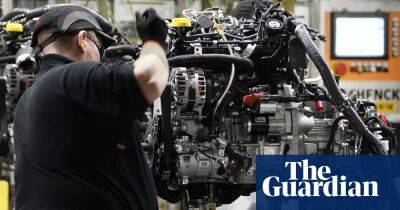AI could improve welfare of farmed chickens by listening to their squawks
Artificial intelligence that could improve the welfare of farmed chickens by eavesdropping on their squawks could become available within five years, researchers say.
The technology, which detects and quantifies distress calls made by chickens housed in huge indoor sheds, correctly distinguished distress calls from other barn noises with 97% accuracy, new research suggests. A similar approach could eventually be used to drive up welfare standards in other farmed animals.
Each year, about 25 billion chickens are farmed around the world – many of them in huge sheds, each housing thousands of birds. One way to assess the welfare of such creatures is to listen to the sounds that they make.
“Chickens are very vocal, but the distress call tends to be louder than the others, and is what we would describe as a pure tonal call,” said Alan McElligott, an associate professor of animal behaviour and welfare at the City University of Hong Kong. “Even to the untrained ear, it’s not too difficult to pick them out.”
In theory, farmers could use chickens’ calls to gauge their level of distress, and enrich their housing where necessary. However, in commercial flocks containing thousands, or tens of thousands of chickens, deploying human observers is impractical. For one thing, their presence could further stress the flock, but with so many birds, objectively quantifying the number of distress calls is impossible, McElligott said.
Instead, his team has developed a deep learning tool to automatically identify chicken distress calls from recordings of intensively farmed chickens. The tool was trained using recordings that had already been manually classified by human experts, to determine which type of sound they represented.
According to an
Read more on theguardian.com





















